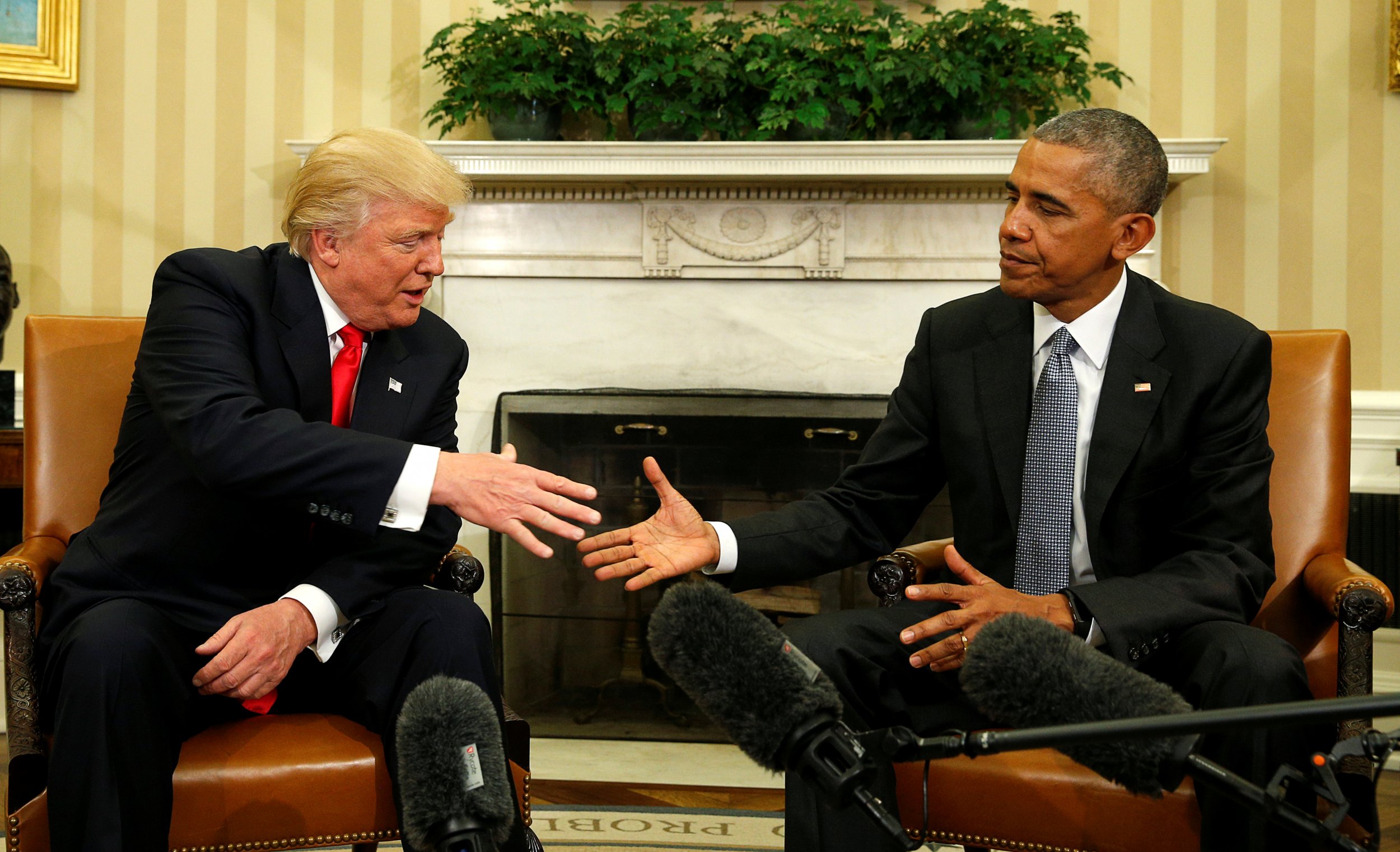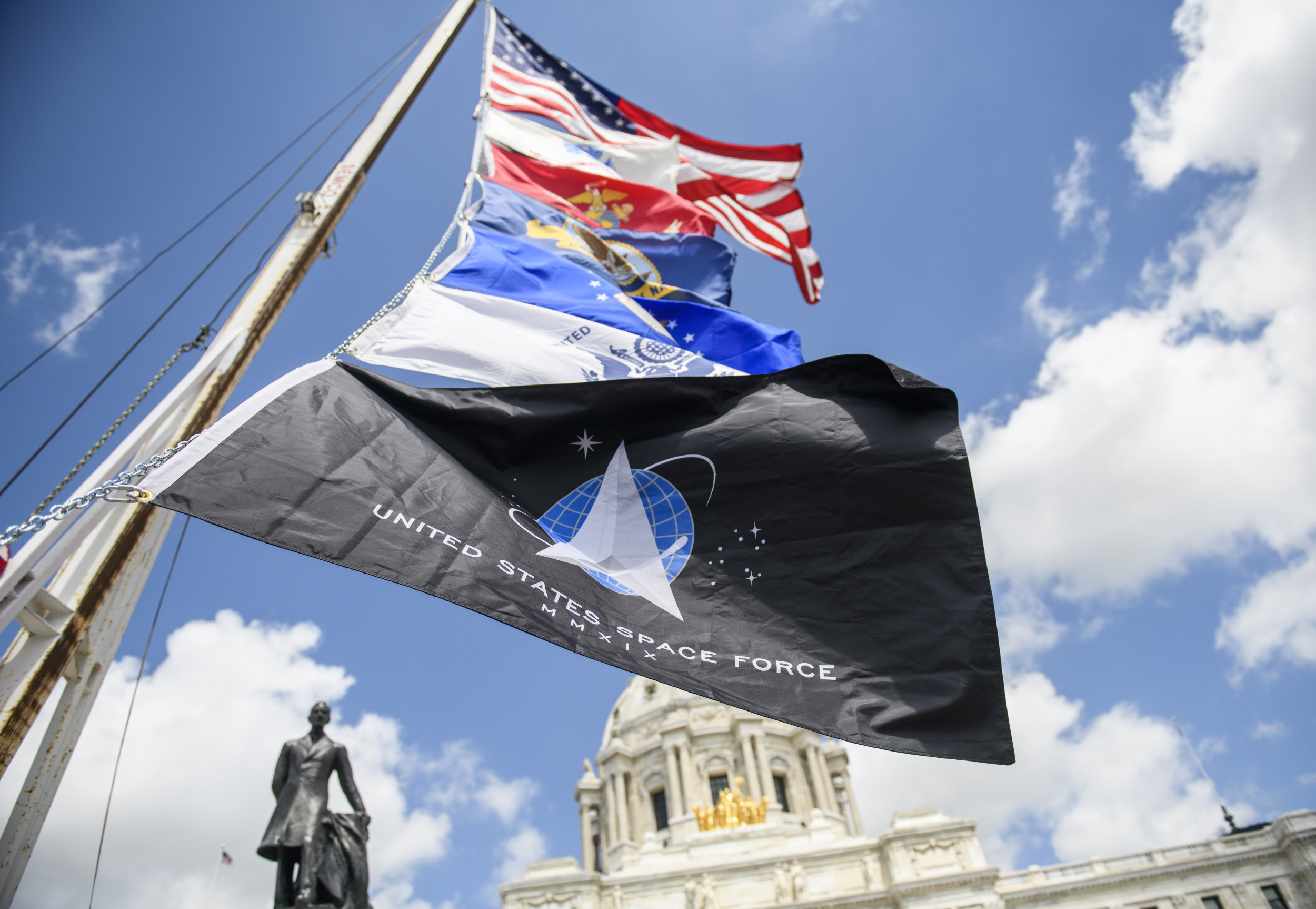
You might think that the formulas that won Donald Trump and Barack Obama's presidential campaigns would be diametrically opposed. In some respects, the two campaigns couldn't be more different: Obama's team presented a collective message, while Trump's team often watched as their candidate went off-message. Obama's calm, measured sentiments resembled the ones voiced by the civil rights movement of the 1960s; Trump cast himself as an underdog squaring up to a greater evil, an approach that seemed akin to the Reagan campaigns of the 1980s.
But despite this, Obama and Trump's appeals to voters had several things in common. For a start, both candidates, unlike their rivals, offered something new through their campaign slogans. Obama's messages of "Hope," "Change We Can Believe In," and "Yes We Can," and Trump's "Make America Great Again," looked forward to a time when things would get better. John McCain's "Country First" and Hillary Clinton's "Stronger Together" failed to do that.
Obama and Trump also succeeded in shaping their campaigns as movements for the dispossessed. Both put forward visions that directly countered and challenged that of "the establishment." Obama, like Trump, did not go into fine detail about what he would do, but he succeeded in rallying voters against McCain whom he cast as stale and out of touch.
Obama and Trump presented themselves as the candidates for people frustrated with aspects of life in contemporary American society or people excluded from the gains of globalization and the technology boom. These voters turned to them because both men were seen as capable of enacting change. Unlike the existing "political elite," voters believed that Obama and Trump were aware of the problems facing ordinary Americans.
Their candidacies became more popular still when their views went viral through social media. Trump's most fervent followers reiterated, unpacked and embellished his campaign messages, sharing them through Facebook and Twitter.
The power of social media, of digital campaigning, cannot be overlooked. Much has been written about Obama's 2008 campaign and how it centered around his website: my.barackobama.com. The site, which was hastily assembled over 10 days in February 2007, eventually became the hub for Obama's supporters, recruiting 13.5 million people.
Through it, the campaign raised around $600 million in funds, coordinated rallies and organized door-knockers on election day. One of it's chief creators, Thomas Gensemer, who I interviewed for the book Pioneers of Digital said that one of Obama's best tactics was to keep digital at the core of his presidential run. This strategy is considered one of the main reasons why Obama beat McCain in 2008.
Trump had his campaign website but it was Twitter where he was ferociously active, to the delight—and occasional horror—of his 14.8 million followers. But digital campaigning, specifically on social media, worked for him in a way that, in hindsight, was almost entirely passive.
Following Trump's victory, BBC technology reporter Rory Cellan-Jones highlighted that 156 million Americans are now Facebook users; two-thirds of them, or 104 million people, get their news primarily from the platform. (In the U.S. fewer people now get their primary news from print or broadcast sources than at any point since the 1940s.)
The "news" that many Americans get is shared through friends, unfiltered by editors. Often it is in the form of partisan opinion pieces. In the worst cases, some of these news stories are false or propagate conspiracy theories. (After coming under heavy criticism, Facebook founder Mark Zuckerberg has said he will do more to address the problem.)
The shift in how most Americans get their news may have helped Trump. When FBI director James Comey announced that it was investigating emails found on a laptop belonging to Hillary Clinton's aide Huma Abedin and her estranged husband, Anthony Weiner, conspiracy theories abounded among Trump supporters on Facebook through to election day. (This despite the FBI saying that it found nothing illegal or damaging among the emails.)
A considerable chunk of the U.S. electorate may have been influenced by right-leaning news stories on social media, encouraging them to vote for Trump.
There is another reason for Obama's success in 2008 and Trump's in 2016 that had nothing to do with their campaigns: timing. Both candidates launched their presidential bids after two terms of the same president—George W. Bush and Barack Obama respectively. This enabled them to capitalize on voters' desire for change, something they did so effectively by presenting themselves as alternatives to the candidates offered by the incumbent president's party.
Whether crowdsourcing or rebel-rousing, both Obama and Trump convinced undecided voters that only they could offer change. From then on, they were able to ride the groundswell of opinion all the way to the ballot box.
Professor Paul Springer is the associate dean of arts and digital industries at the University of East London and chair of research for Edcom, the European Institute for Commercial Communications Education. He is also co-author of the book , Pioneers of Digital.
Uncommon Knowledge
Newsweek is committed to challenging conventional wisdom and finding connections in the search for common ground.
Newsweek is committed to challenging conventional wisdom and finding connections in the search for common ground.
About the writer
To read how Newsweek uses AI as a newsroom tool, Click here.








